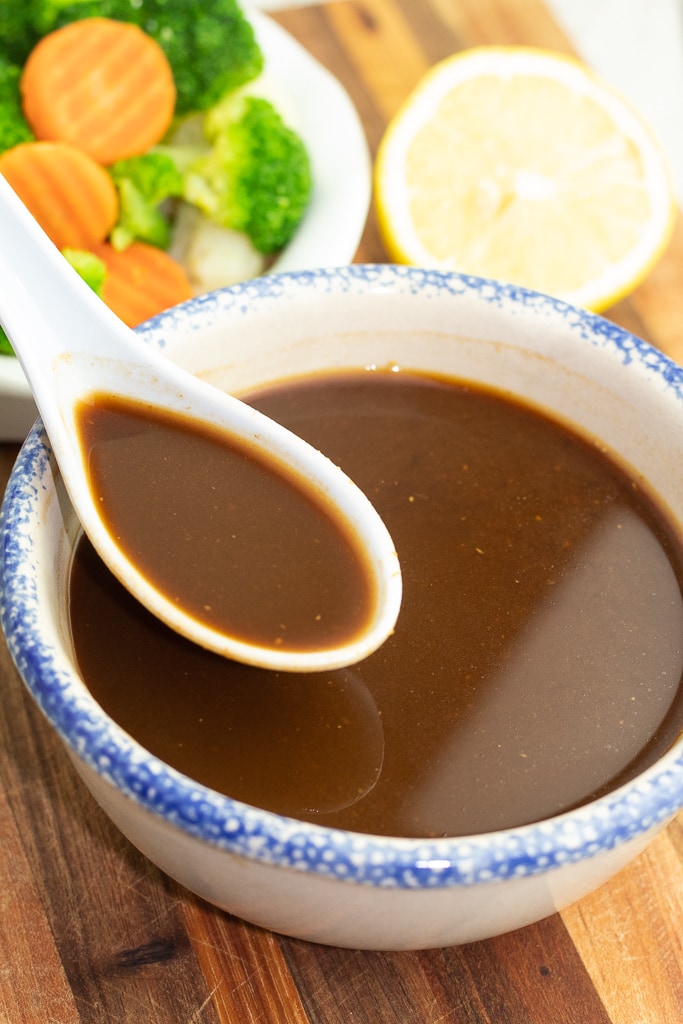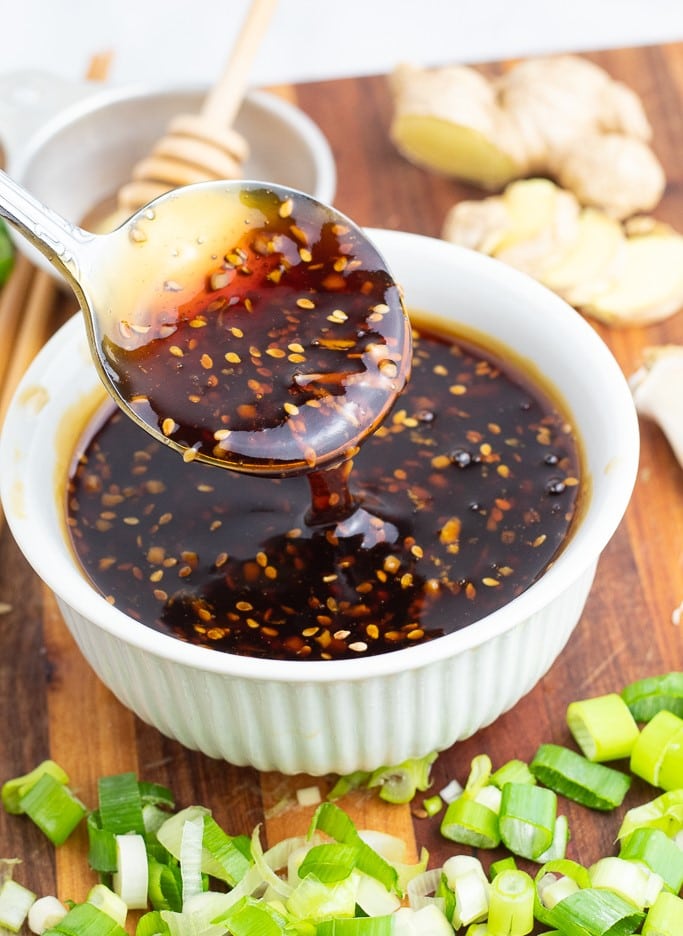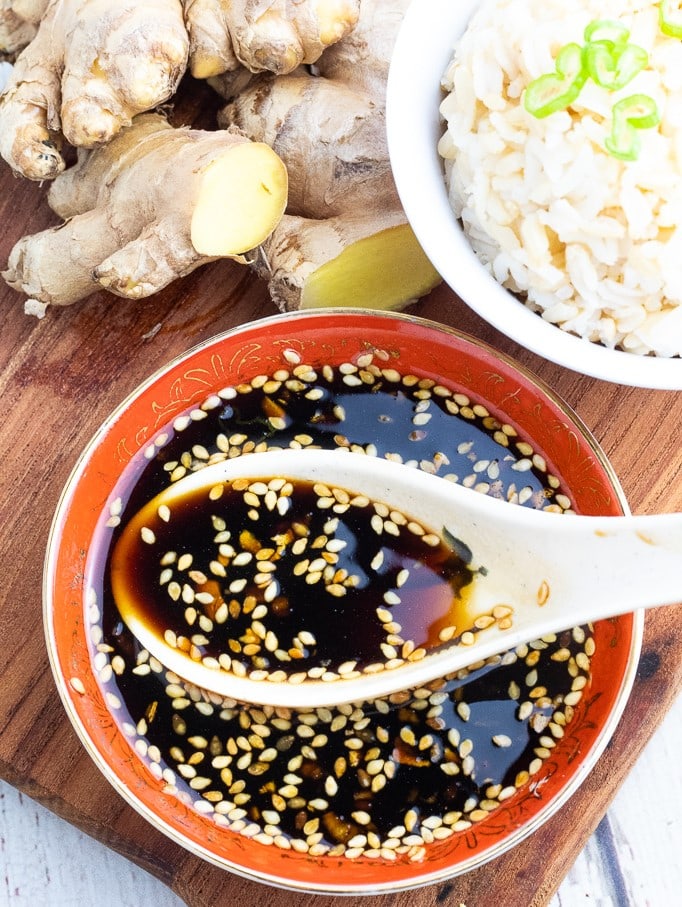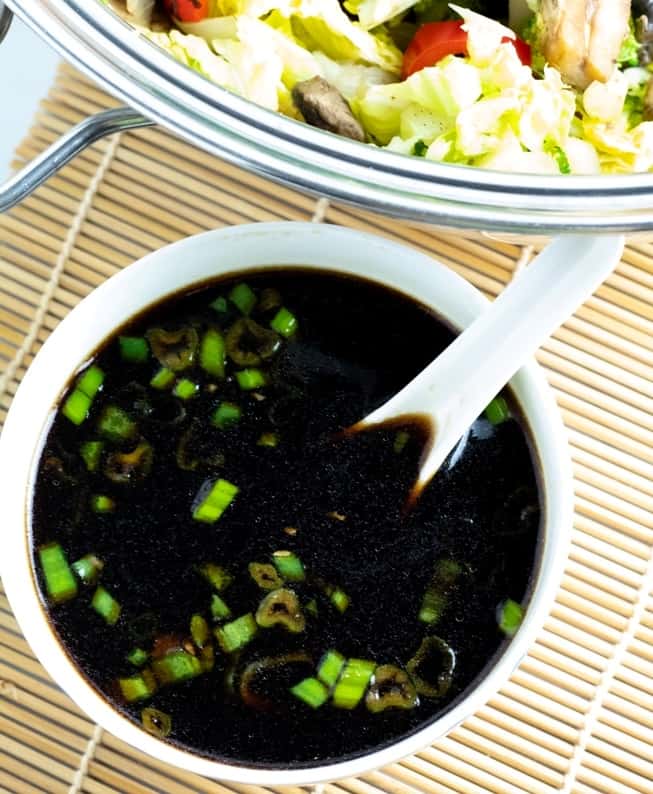Miso-Ginger Dressing (5 Minutes)
This oil-free Miso Dressing delights taste buds with its rich umami flavor that adds depth and complexity to salads, poke bowls, and veggies alike. Its versatility makes it a perfect complement to a variety of dishes, infusing them with savory goodness that is out of this world!
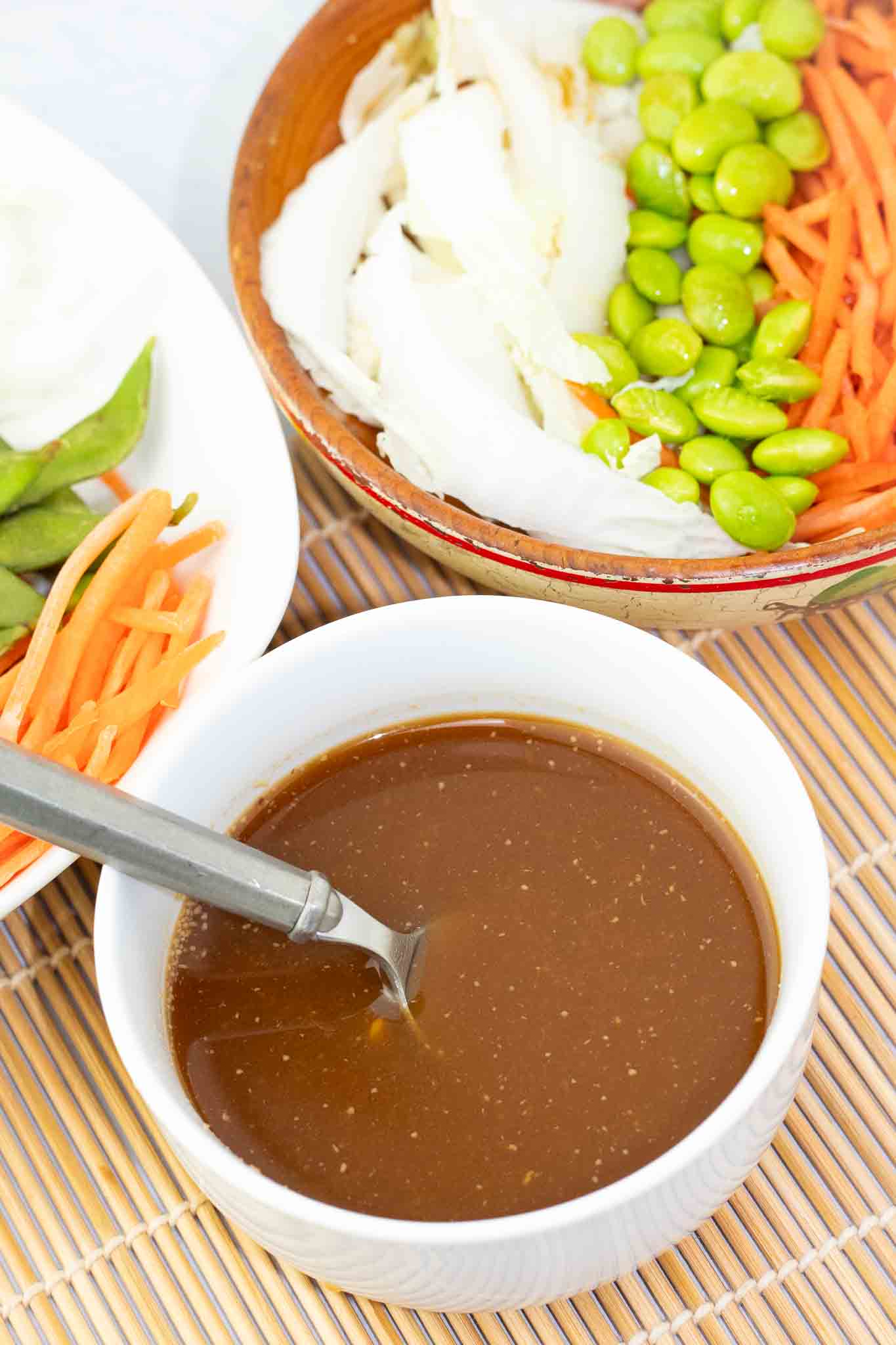
You won’t believe how easy it is to make this quick miso salad dressing by whisking together a handful of ingredients in only 5 minutes. Use it to drizzle over fresh garden salads, veggie poke bowls, and roasted or steamed veggies. Try it on tofu dishes, in plant-based stir-fries, and even use it for a marinade. Our miso dressing doesn’t use tahini, but we do have a tahini dressing that is out of this world.
It has the perfect flavor with a delicious mix of salty and sweet umami flavor, and it pairs well with other Japanese dishes like using it as a dipping sauce with veggie sushi. Not to mention, it’s low in calories, oil-free, vegan, and can be completely gluten-free, so it’s a very healthy Asian miso sauce to put on everything!
I have found so many uses for this miso ginger dressing that I make a double batch every time, so I will have it on hand in the refrigerator to add to any dish or meal. If you like miso sauce, be sure to take a look at our orange miso dressing and napa cabbage salad recipes. I even have a simple basic miso dressing that can be ready in 5 minutes.
Reasons you will love this dressing
- Bursting with Umami Flavor – The combination of miso and ginger creates a savory, tangy dressing that elevates any salad or dish.
- Quick & Easy to Make – Ready in minutes with just a few ingredients, it’s perfect for busy weeknights or meal prep.
- Healthy & Nutrient-Rich – Packed with probiotics from miso and antioxidants from ginger, this dressing supports gut health and boosts immunity.
Ingredients you will need
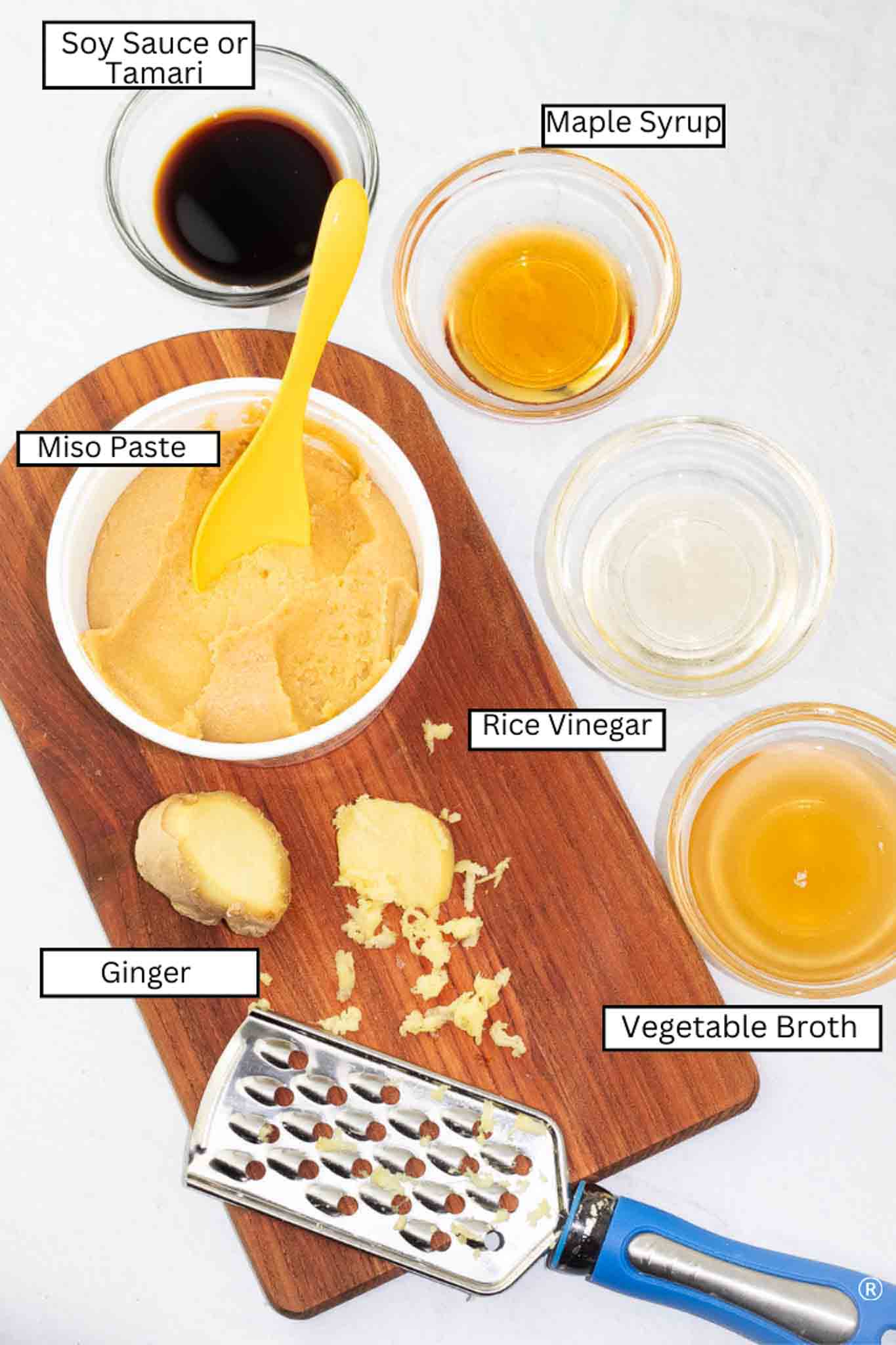
- Miso paste. I use white miso paste for this recipe because it has a milder taste that is perfect for making dressing. You could also use red or other varieties, but they have a sharper taste.
- Rice vinegar. This adds a tangy flavor, but you could also use lemon or lime juice to add the acidy flavor.
- Maple syrup. To give this recipe a hint of sweetness, I use a little maple syrup. There are some substitutions listed below.
- Low-sodium soy sauce. Since we are already getting a nice salty flavor from the miso, stick with low-sodium soy sauce to keep the sodium content down.
- Fresh or ground ginger. I love fresh ginger, but dried ground can also be used.
- Vegetable broth. Since we aren’t using any oil in this dressing, veggie broth helps round out the flavor.
What is Miso?
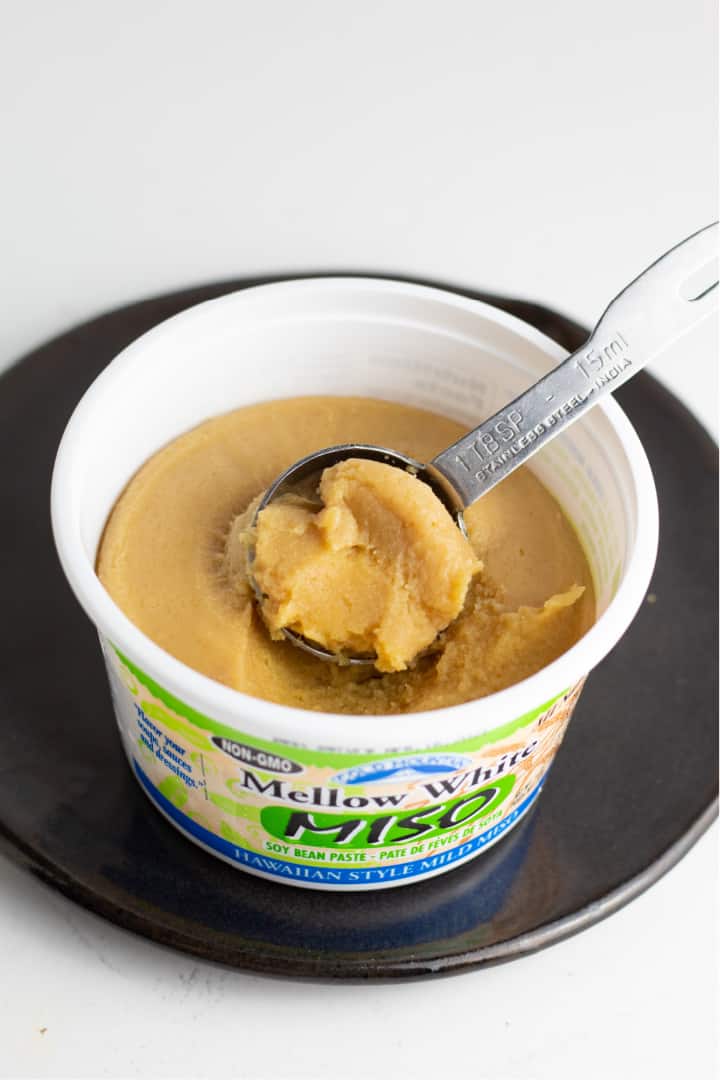
Miso, also known as fermented soybean paste, is a traditional Japanese food. It is made by fermenting steamed soybeans, salt, and koji (a type of fungus cultivated on rice and other grains).
This thick, savory miso paste serves as a versatile flavor enhancer, commonly utilized in the preparation of vegan dipping sauces and spreads. It is probably most commonly used for making miso soup here in the US.
There are several different types and flavors of miso paste, but this recipe uses white miso which has a mellow, slightly sweet flavor. You will notice from the photo above that it isn’t white but more of a yellow color. If you love umami flavor, try my easy miso sauce too because it’s good on everything!
You can find miso on the Asian aisle of some grocery stores, and I have found that it is often carried in the refrigerator section near tofu and tempeh products.
Types of Miso
There are a lot of different types of miso paste and each has a slightly different flavor. For this dressing and other sauces, I like to use white because it has the mildest and subtly sweet flavor.
For optimal flavor and preservation of its delicate qualities, it’s advisable to incorporate miso into dishes during the final stage of cooking rather than at the outset as demonstrated in this miso soup recipe. This approach ensures that miso’s nuanced blend of sweet and savory notes remains intact, enhancing the overall depth and complexity of the dish.
Tips & Substitutions
- White miso paste gives this dressing the best mellow flavor, but red will also work.
- Vinegar adds an acidic flavor, and I really like rice vinegar. Other options include apple cider, white balsamic, lemon juice, or lime juice.
- Sweetener is needed to balance out the umami flavor of this dressing. While I use maple syrup to achieve this, other options might be agave nectar, honey, or date syrup.
- Soy sauce has gluten in it, so to make this gluten-free, you’ll want to use tamari as a replacement.
- Spice is one of my favorite things to add a little heat to all kinds of recipes, and srirach sauce is an excellent optional addition if you want to kick it up a notch.
How to Make Quick Miso Dressing
The recipe card at the bottom of the page has the full list of ingredients with measurements and instructions.
This dressing is so simple that it can be made in only 4 steps with only six ingredients. All you need is a whisk and a bowl.

STEP #1: Begin by heating the vegetable broth in a microwave-safe bowl for approximately 10-15 seconds and then add the miso paste. Heating the broth helps dissolve and break up the paste.

STEP #2: Whisk together well until there are no clumps. Be sure to add the miso paste AFTER heating the broth because some of the aromatic and nutritional benefits of miso can be damaged by cooking.

STEP #3: Next, add all of the other ingredients except the grated ginger–rice vinegar, maple syrup, and soy sauce and whisk well.

STEP #4: Grate and toss in the fresh ginger and stir with a spoon or whisk to incorporate well. Give it a taste test. If it’s too salty, add a little more veggie broth. Too tangy? Add another splash of maple syrup. Serve and enjoy on your favorite salads and veggie poke bowls!
Frequently Asked Questions
Absolutely! Just ensure you’re using a gluten-free miso paste (usually labeled as such) and gluten-free soy sauce or tamari.
Yes! Miso provides probiotics for gut health, while ginger offers anti-inflammatory and antioxidant benefits, making this dressing a nutritious choice. For those concerned about the salt content, this 3-minute video Is Miso Healthy? from Dr. Michael Greger with Nutritionfacts.org should help relieve any concerns.
Yes! You can control the flavor by adding more or less sweetener (like maple syrup or honey) or saltiness by adjusting the amount of miso or soy sauce.
For optimal storage, transfer the dressing into an airtight container and refrigerate it, where it will remain fresh for 7-10 days. While it may actually last longer, I suggest preparing a fresh batch that will suffice for up to two uses, considering its simplicity to whip up. Shake or stir well before each use as ingredients may separate.
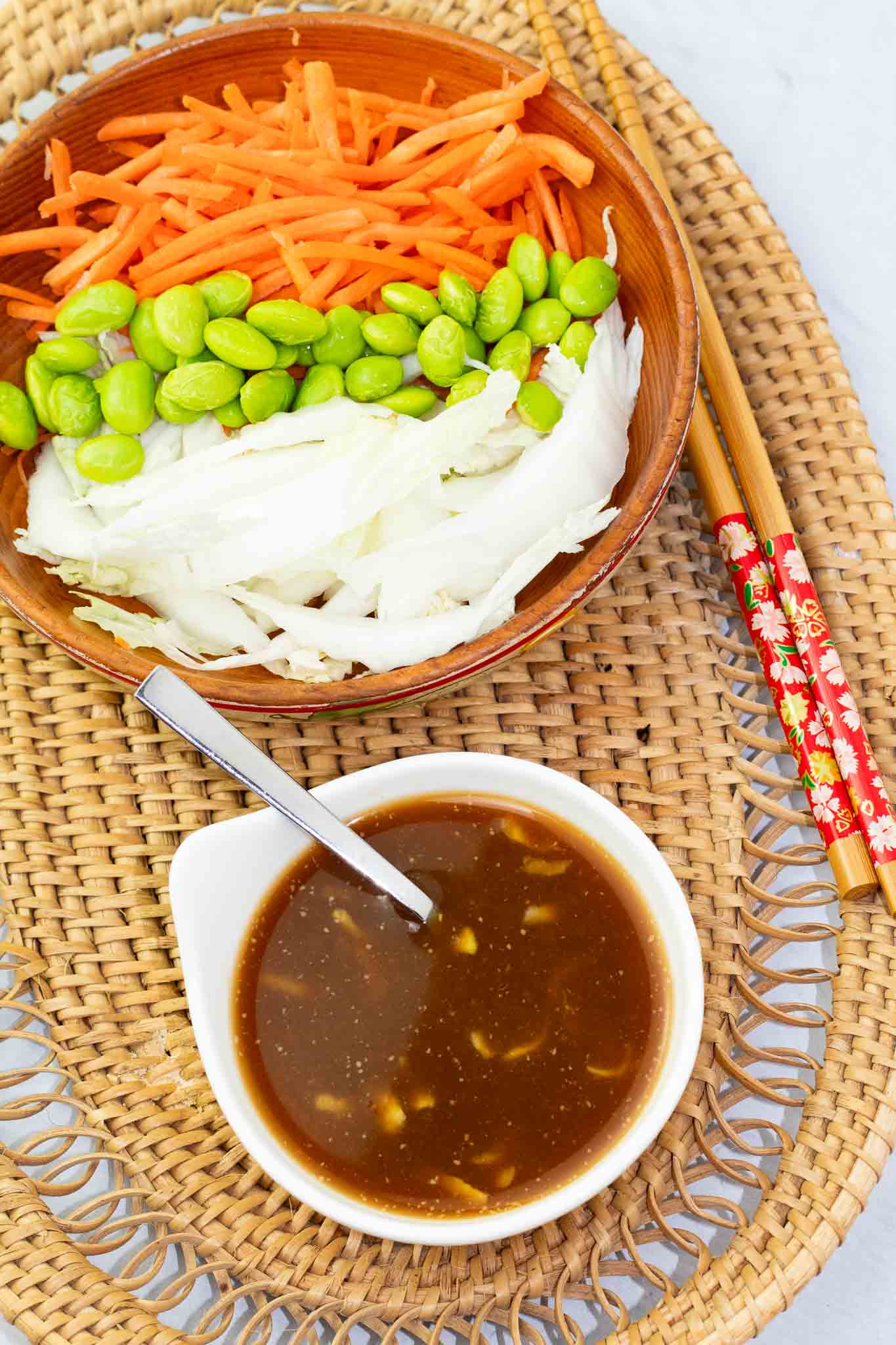
For those of you new to the whole food plant-based lifestyle, we’ve created a FREE 7-Day Plant-Based Menu Planner to help you get started!
If you try this recipe, please let us know how you like it by rating it and leaving a comment. We love to hear from you!
Want to Save This Recipe?
Enter your email & I’ll send it to your inbox. Plus, get great new recipes from me every week!
By submitting this form, you consent to receive emails from EatPlant-Based
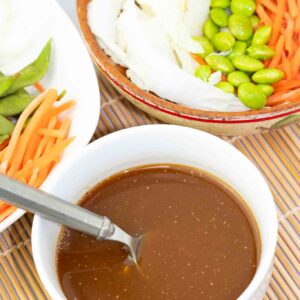
Miso Ginger Sauce
Ingredients
- 1 teaspoon white miso paste
- 1 tablespoon low-sodium soy sauce (or tamari for gluten-free)
- 1 tablepsoon rice wine vinegar
- 3 tablespoons vegetable broth
- 1 teaspoon maple syrup (or agave nectar, honey, or date syrup)
- 1/4 teaspoon ginger, grated (or dry ground)
Instructions
- Begin by heating the vegetable broth in a microwave-safe bowl for approximately 10-15 seconds and then add the miso paste. Heating the broth helps dissolve and break up the paste.
- Whisk together well until there are no clumps. Be sure to add the miso paste AFTER heating the broth because some of the aromatic and nutritional benefits of miso can be damaged by cooking. I have included more information about this in the article above.
- Next, add all of the other ingredients except the grated ginger–rice vinegar, maple syrup, and soy sauce and whisk well.
- Grate the ginger, toss it in with the other ingredients, and stir with a spoon or whisk to incorporate well.
- Time to taste test. If it’s too salty, add a little more veggie broth. Too tangy? Add another splash of maple syrup. Serve and enjoy on your favorite salads and veggie poke bowls!
Video
Notes
- White miso paste gives this dressing the best mellow flavor, but red will also work.
- Vinegar adds an acidic flavor, and I really like rice vinegar. Other options include apple cider, white balsamic, lemon juice, or lime juice.
- Sweetener is needed to balance out the umami flavor of this dressing. While I use maple syrup to achieve this, other options might be honey, agave nectar, or date syrup.
- Soy sauce has gluten in it, so to make this gluten-free, you’ll want to use tamari as a replacement.
- Spice is one of my favorite things to add a little heat to all kinds of recipes, and srirach sauce is an excellent optional addition if you want to kick it up a notch.
Nutrition
Disclaimer
To obtain the most accurate representation of the nutritional information in a given recipe, you should calculate the nutritional information with the actual ingredients used in your recipe, using your preferred nutrition calculator. You are solely responsible for ensuring that any nutritional information provided is accurate, complete, and useful.
About Terri Edwards
Hi guys! I am the content creator behind EatPlant-Based and a licensed Food for Life instructor with the Physicians Committee for Responsible Medicine. I am passionate about sharing healthy recipes and tips to empower others to get healthy. I’m so glad you’re here! Read More…

